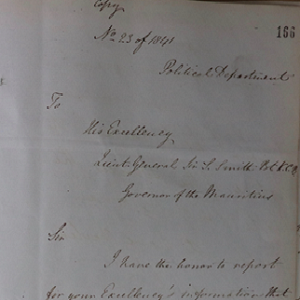Economics

Plans for Social Housing in France
Most of the new housing was constructed on cities’ fringes, or on adjacent farmland just outside the central city, by a quasi-public company known by its French initials SCIC (Société central immobilière de la Caisse des dépôts, or Central Real Estate Company of the Deposits and Consignments Fund

The mayor of Lyon, France drives a bulldozer to initiate construction of social housing
The headline reads, in English, “Aboard a bulldozer, Mr.

Pittsburgh News Coverage of the Community Reinvestment Group
"PCRG challenges financial institution lending practices,” Pittsburgh, Dec. 22, 1993.

Pittsburgh Newspaper Article “Bank Gives Boost to Black Areas”
“Bank Gives Boost to Black Areas,” New Pittsburgh Courier, Pittsburgh, July 2, 1988.

Short Teaching Module: Global Microhistory and the Nineteenth-Century Omani Empire
In their primer essay, Jessica Hanser and Adam Clulow note how scholars of global microhistory explore relationships between macro and micro, deep structures and contingency, and big state actors and minor players.

1841 Letter from Atkins Hamerton
Atkins Hamerton (d. 1857) was a British military officer and diplomat, who served as the first British Consul to the Omani Empire based in Zanzibar. He left behind thousands of pages of sources, presently scattered between archives in the U.K., Zanzibar, and India.

Wolff’s justification for omitting hay values
In 1864, for the first time, Emil Wolff did not include hay values alongside nutritional components in the data tables published annually in the calendar. In this accompanying article, Wolff reframed his previous translation into hay values as merely educational.

Short Teaching Module: Nineteenth-Century American Trade on Zanzibar
Although American merchants often fade from historical narratives after the eighteenth century, they remained influential actors in the United States and abroad.

Outward Cargo Manifest of the Rowena, 1841
Cargo manifests and other shipping records offer a tangible glimpse into expansive commercial networks, reminding observers of the physical goods underwriting long distance trade.

American and Zanzibari Trade Contract, 1841
This contract, one of few bilingual agreements that survive, illustrates the practical commercial system that Indian, Arab, and American traders developed on Zanzibar. The document outlines the quantity, quality, and price of the cloves being sold as well as their expected delivery date.